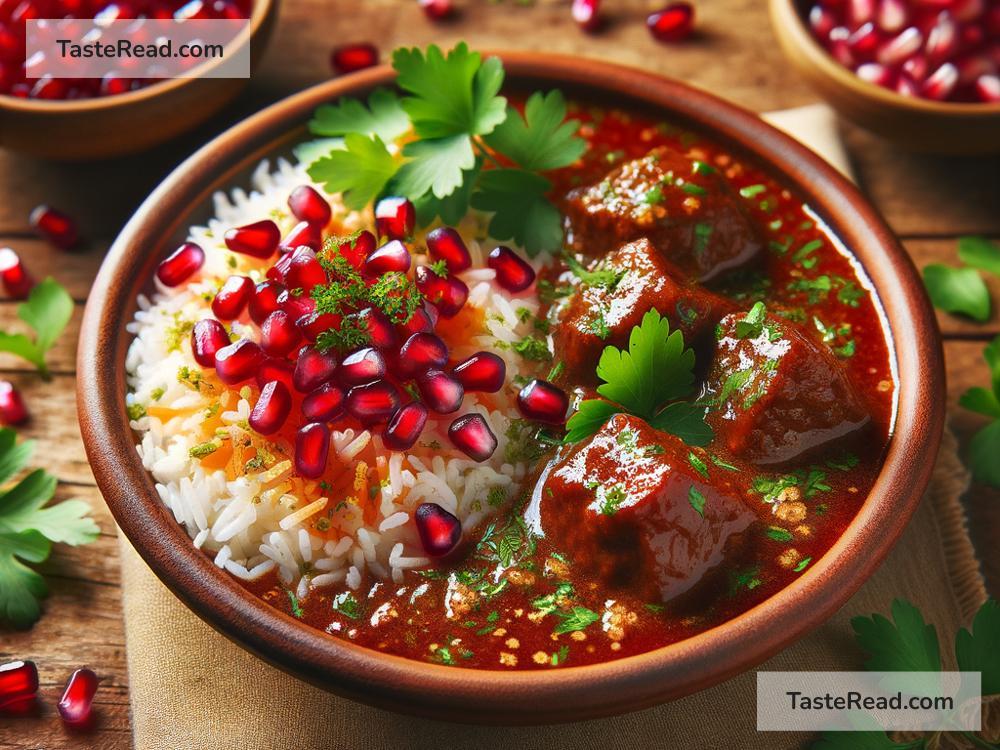How the Iranian Fesenjan Became a National Dish
Iran, a country with a rich culinary tradition, is home to one of the most distinctive and cherished dishes in Middle Eastern cuisine: Fesenjan. This luxurious stew, combining flavors that are simultaneously tangy, sweet, and nutty, stands as a testament to Iran’s historical depth and culinary creativity. But how did Fesenjan climb the ranks to become a national dish beloved by millions, both within the country’s borders and beyond? Let’s journey into the history, ingredients, and cultural significance of Fesenjan to understand its esteemed status.
Origins and History
Fesenjan, or Khoresht-e Fesenjan, has roots that stretch back over a thousand years, making it a dish steeped in history and tradition. Its origins are often traced to the ancient Persian Empire, where it was likely served as a luxury meal in royal courts. The dish’s longevity and continued popularity underscore its importance in Iranian culture and cuisine. Fesenjan’s evolution over centuries has seen it adapt to the tastes and ingredients of various regions within Iran, but its essence remains unchanged: a celebration of flavor and culinary craftsmanship.
Ingredients and Preparation
The heart of Fesenjan lies in its simple yet sophisticated ingredients. At its core are pomegranate syrup and ground walnuts, which are combined to create a sauce of unparalleled depth and complexity. The pomegranate, with its tart and subtly sweet profile, and the rich, creamy texture of walnuts, form a base that is both unique and versatile. Depending on the region or family tradition, Fesenjan can be prepared with chicken, duck, or even vegetarian substitutes like pumpkin or eggplant, making it accessible to a wide range of dietary preferences.
Cooking Fesenjan is an exercise in patience and care. The walnuts are finely ground and gently simmered with the pomegranate syrup, allowing the flavors to meld and intensify. Slow cooking is key, as it enriches the sauce, allowing it to develop a thick consistency and dark, inviting color. Spices like saffron, cardamom, and cinnamon might be added to enhance the stew’s complexity and fragrance.
A Dish for Special Occasions
Fesenjan’s rich flavors and luxurious ingredients render it a dish best suited for special occasions. It is a staple at celebrations such as Nowruz, the Persian New Year, and weddings, symbolizing prosperity, joy, and the sweet and sour aspects of life. Serving Fesenjan is a gesture of hospitality and affection, a way of honoring guests and marking significant moments with a dish that embodies the essence of Iranian culinary tradition.
Cultural Significance
The cultural significance of Fesenjan cannot be overstated. It is more than just a meal; it is a cultural artifact, telling stories of ancient lands, royal banquets, and the everyday lives of the people who have passed down the recipe through generations. Fesenjan connects Iranians to their past, encapsulating the rich history, diverse influences, and the culinary innovations that have shaped Iran’s cultural identity.
Moreover, Fesenjan has become an ambassador of Iranian cuisine on the global stage. Its unique flavor profile challenges and delights the palates of those less familiar with Persian food, often serving as an introduction to the broader world of Iran’s culinary delights. The dish’s ability to adapt to different tastes and dietary needs has helped it gain popularity far beyond Iran’s borders, making it a staple in Middle Eastern restaurants worldwide.
In Conclusion
Fesenjan’s journey from royal courts to dinner tables around the world is a testament to its timeless appeal and the enduring richness of Iranian culture. As a national dish, it carries the weight of history and the warmth of home, offering a taste of Iran’s culinary soul. Whether enjoyed in a festive gathering or a quiet family dinner, Fesenjan continues to be a source of pride, nostalgia, and unending delight for Iranians and food lovers everywhere.
The story of Fesenjan is a reminder of how food transcends mere sustenance to become a bearer of culture, tradition, and shared human experience. As long as there are people to cook it, share it, and savor it, Fesenjan will remain a cherished dish, connecting the past with the present and inviting future generations to partake in its rich, nuanced flavors.


